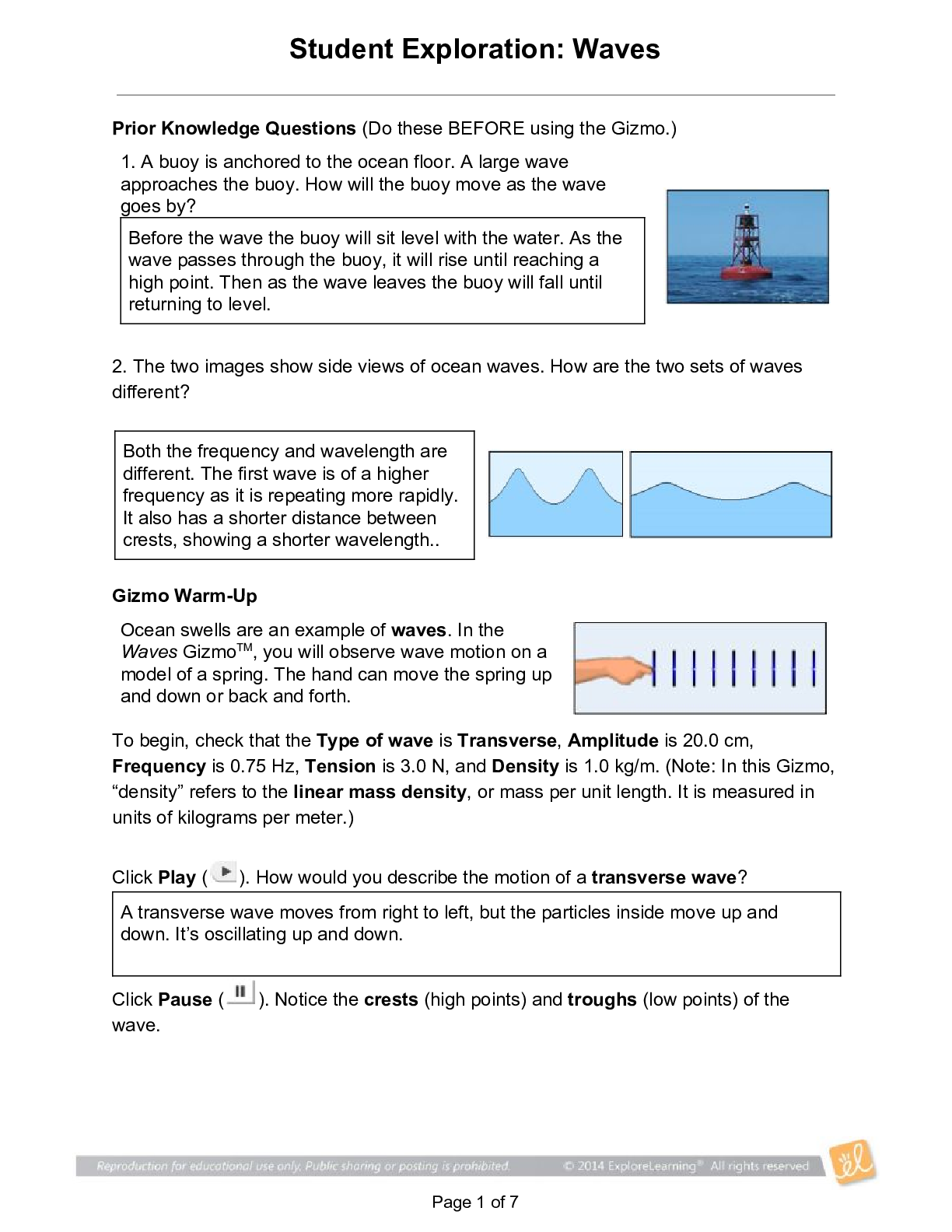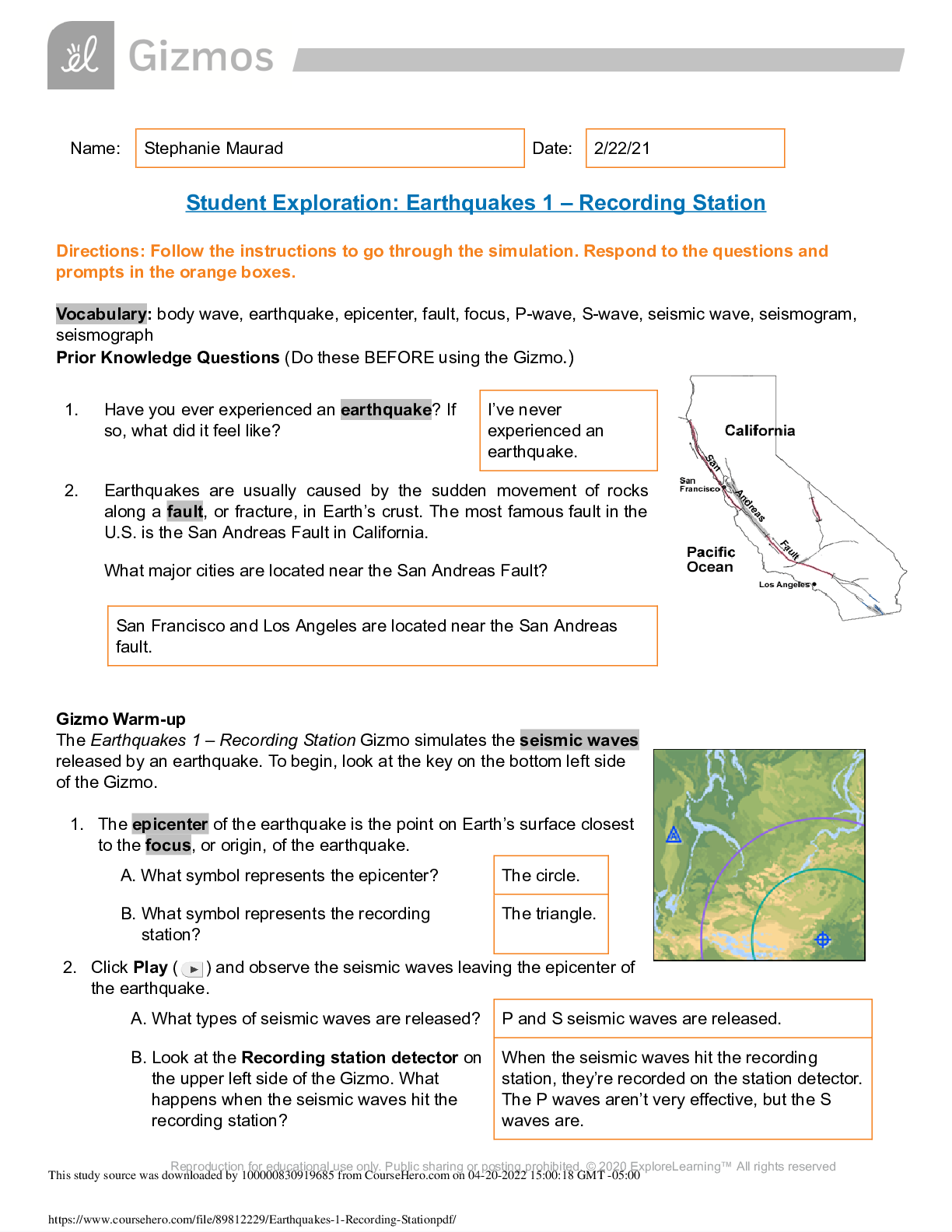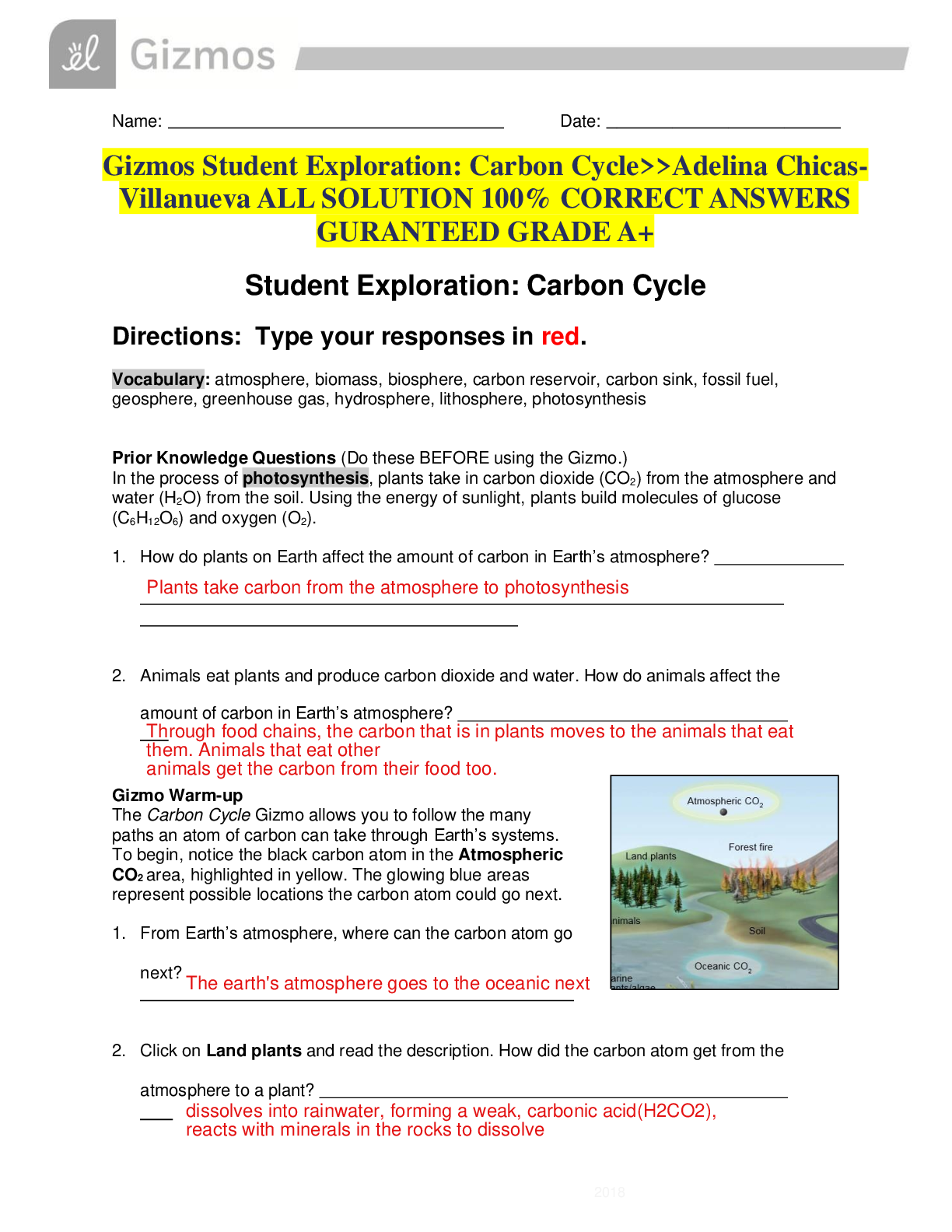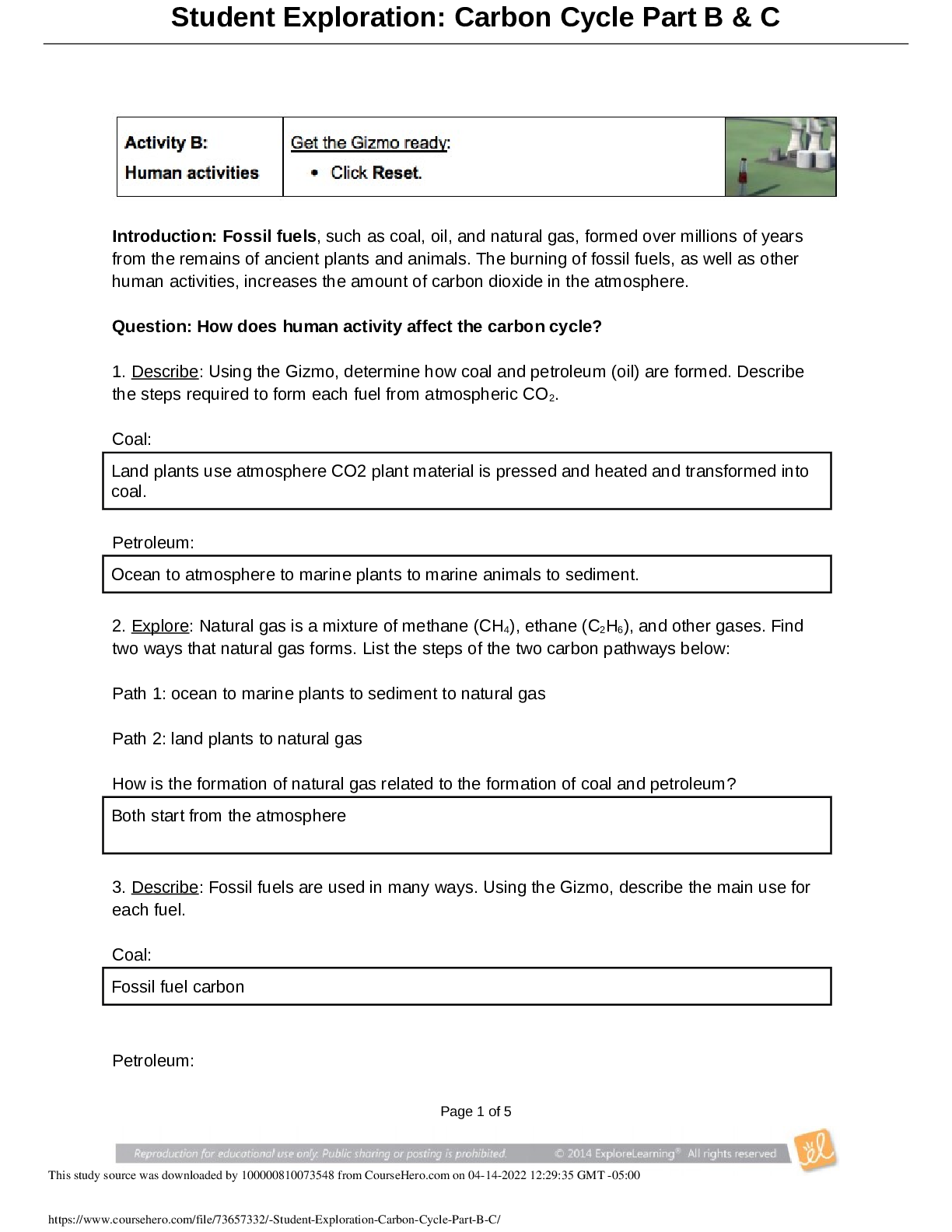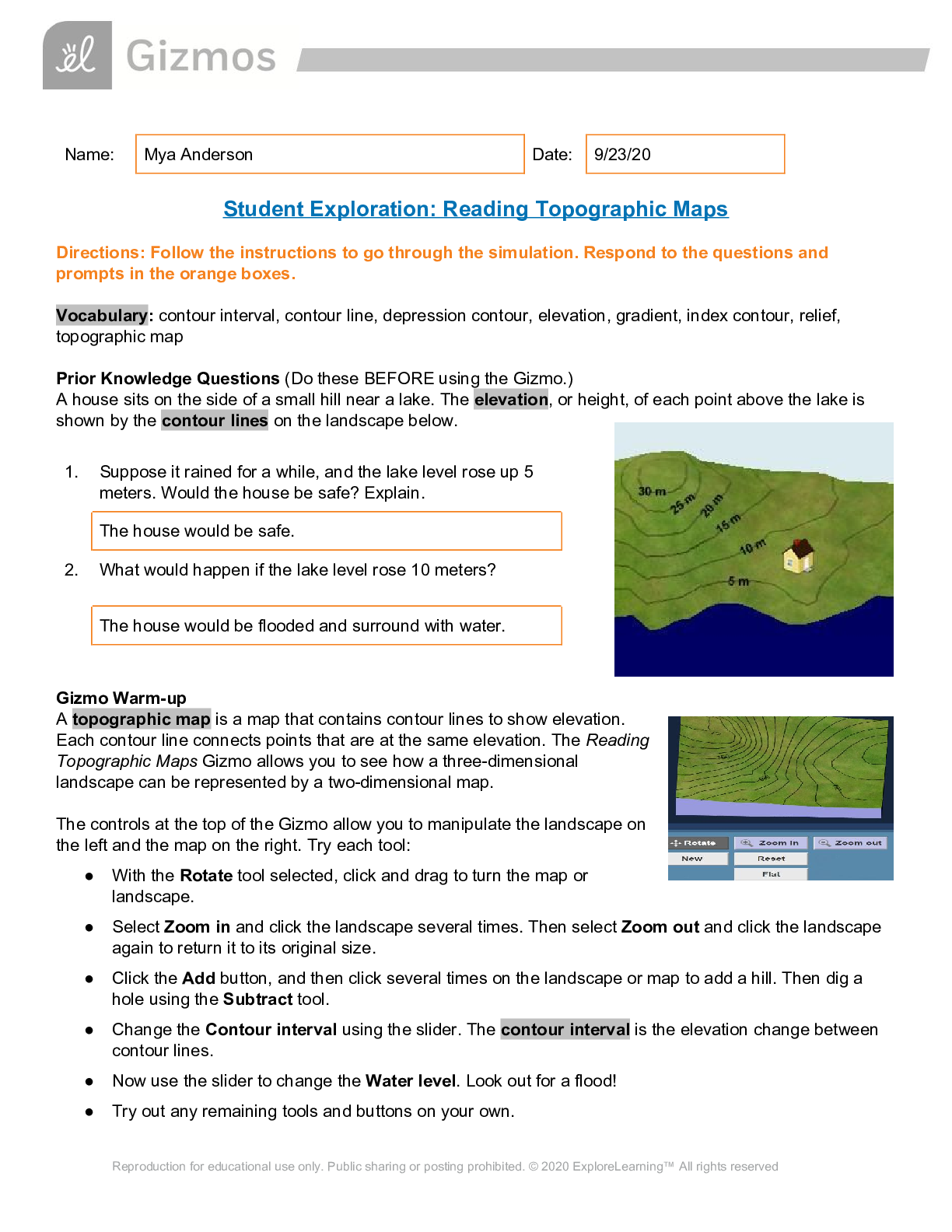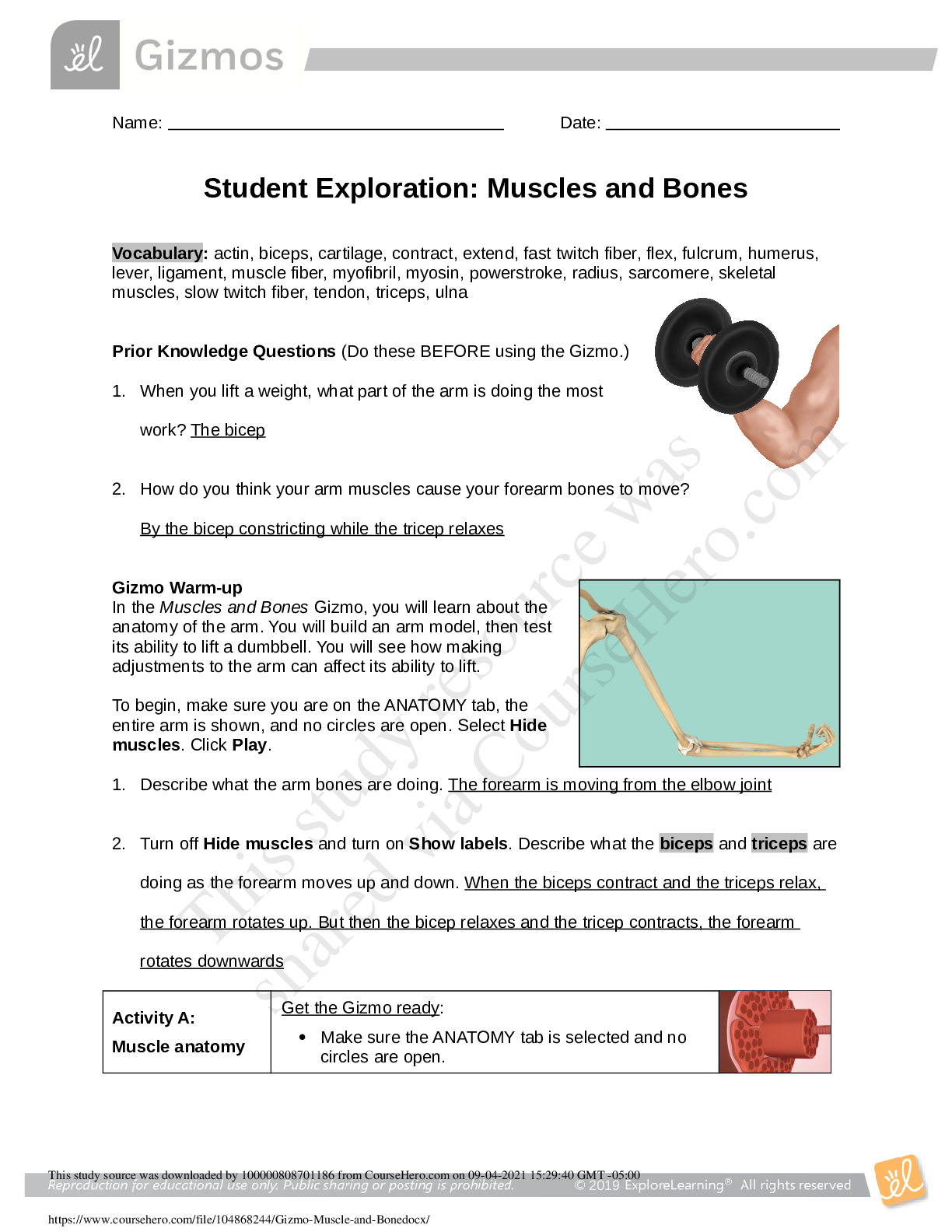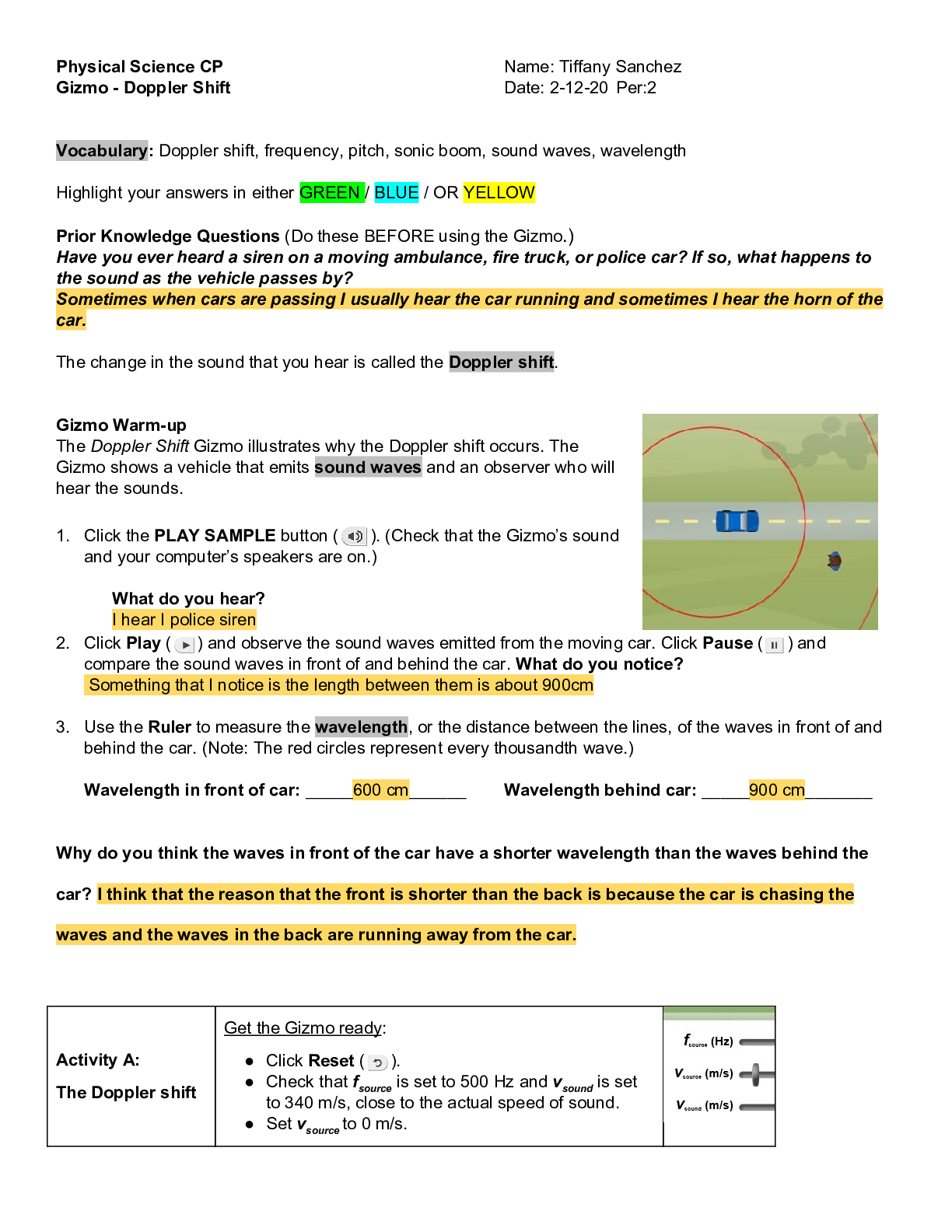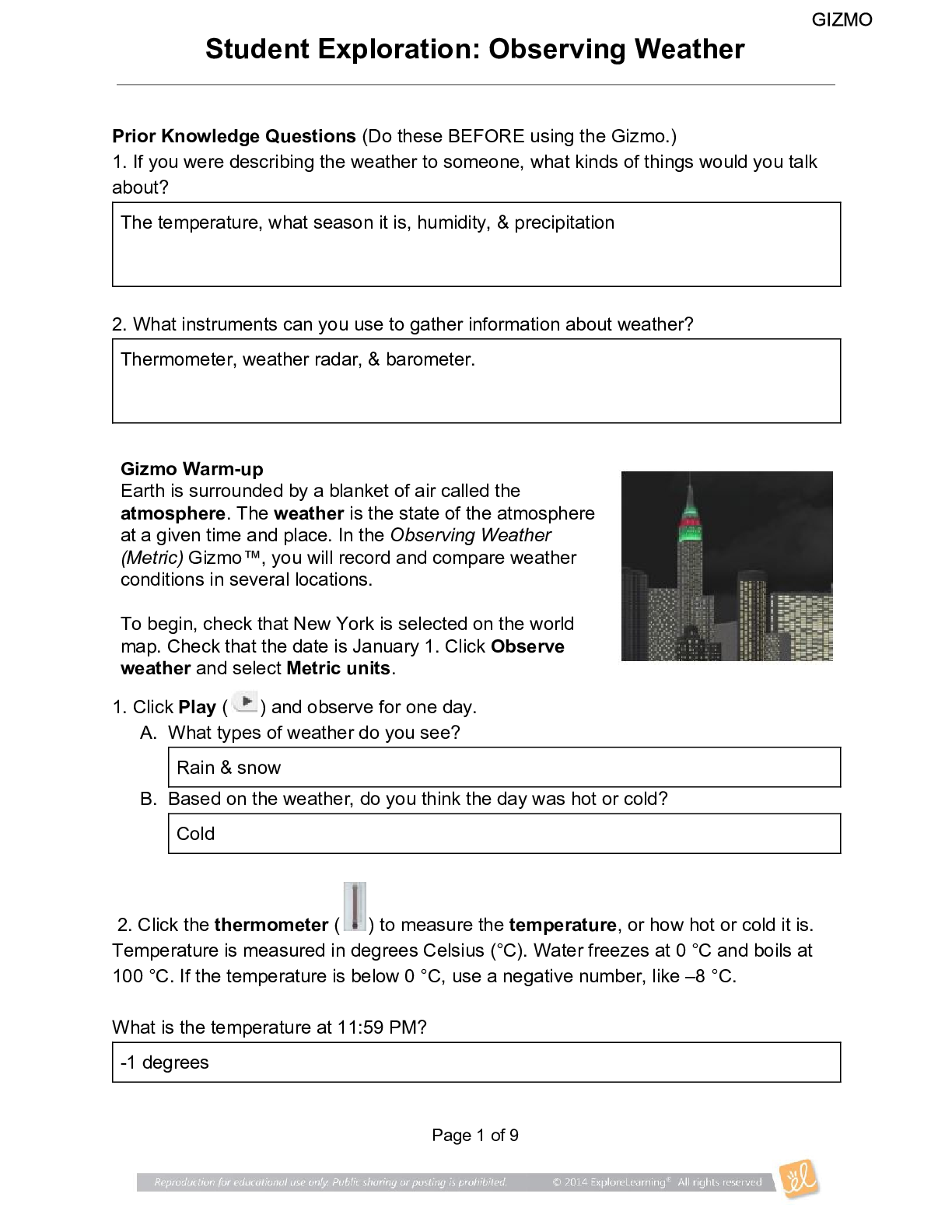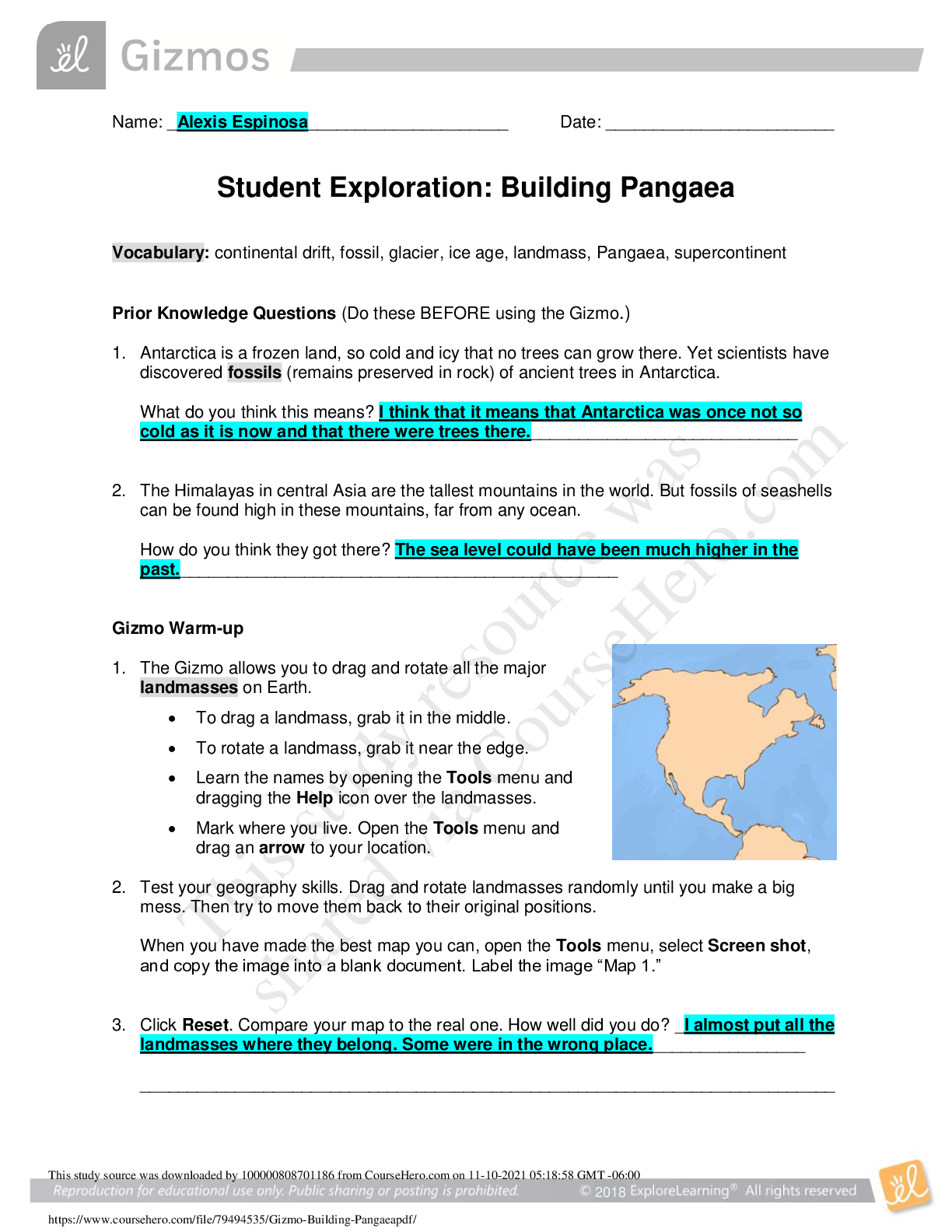SCIENCE 101 > GIZMOS > Student Exploration: Carbon Cycle. SCIENCE Earth. (All)
Student Exploration: Carbon Cycle. SCIENCE Earth.
Document Content and Description Below
Student Exploration: Carbon Cycle Vocabulary (refer to vocab file located on the Gizmo site for definitions): Atmosphere: the gases that surround a planet Biomass: the total mass of a group of livi ... ng things. Biosphere: living things on a planet. Carbon reservoir: a part of Earth that stores carbon Carbon sink: a carbon reservoir that absorbs carbon from the atmosphere and stores it for a long period of time fossil fuel: a fuel formed over thousands or millions of years from the remains of living organisms Geosphere: the rocky, non-living parts of a planet. Greenhouse gas: a gas in Earth’s atmosphere that absorbs and then re-radiates heat. Hydrosphere: – the water on a planet. Lithosphere: the rigid upper layer of the Earth Photosynthesis: – a process in which plants use energy from light to change carbon dioxide and water into glucose (sugar) and oxygen Prior Knowledge Questions (Do these BEFORE using the Gizmo.) In the process of photosynthesis, plants take in carbon dioxide (CO2) from the atmosphere and water (H2O) from the soil. Using the energy of sunlight, plants build molecules of glucose (C6H12O6) and oxygen (O2). 1. How do plants on Earth affect the amount of carbon in Earth’s atmosphere? The plants take in carbon from the air for photosynthesis. It decreases the amounts of carbon levels in the air. 2. Animals eat plants and produce carbon dioxide and water. How do animals affect the amount of carbon in Earth’s atmosphere? Animals affect the amount of carbon on the Earth because they release carbon into the air, increasing the levels. Gizmo Warm-up The Carbon Cycle Gizmo™ allows you to follow the many paths an atom of carbon can take through Earth’s systems. To begin, notice the black carbon atom in the Atmospheric CO2 area, highlighted in yellow. The glowing blue areas represent possible locations the carbon atom could go next.1. From Earth’s atmosphere, where can the carbon atom go next? The carbon atom can go to the plants next. 2. Click on Land plants and read the description. How did the carbon atom get from the atmosphere to a plant? The carbon atom got from the atmosphere to a plant from photosynthesis. 3. Select Land animals. How did the carbon atom get from land plants into the animal? The carbon atom would get from the plant to the animal from the animal eating the plant. 4. Select Atmospheric CO2. How did the carbon atom get from land animals back to the atmosphere? The animals release the carbon back into the air by the process of cellular respiration. Activity A: Carbon pathways Get the Gizmo ready: • Click Reset. Introduction: Earth can be divided into four systems. The atmosphere is the air above Earth’s surface. The hydrosphere is composed of all of Earth’s water. The geosphere is the rocky, non-living part of Earth. The biosphere consists of all living things, including people. Some scientists use the term “anthroposphere” to describe everything made or modified by humans. Question: How does carbon move between the atmosphere, hydrosphere, biosphere, and geosphere? 1. Explore: Use the Gizmo to create a path for carbon that begins and ends in the atmosphere. Fill in the steps in the path below. Then, label each location with the system it represents. Finally, summarize very briefly how the carbon atom got to that location. Carbon path System How it got there Atmospheric CO2 Atmosphere Atmospheric CO2 comes from volcanoes, burning fossil fuels, and other sources. Oceanic CO2 Hydrosphere CO2 dissolves in the cold water of the ocean, and the colder the temperature, the more it dissolves. Large amounts of dissolved CO2 remain in the bottom of the ocea [Show More]
Last updated: 3 years ago
Preview 1 out of 11 pages

Buy this document to get the full access instantly
Instant Download Access after purchase
Buy NowInstant download
We Accept:

Reviews( 0 )
$9.00
Can't find what you want? Try our AI powered Search
Document information
Connected school, study & course
About the document
Uploaded On
Apr 14, 2022
Number of pages
11
Written in
All
Additional information
This document has been written for:
Uploaded
Apr 14, 2022
Downloads
0
Views
111

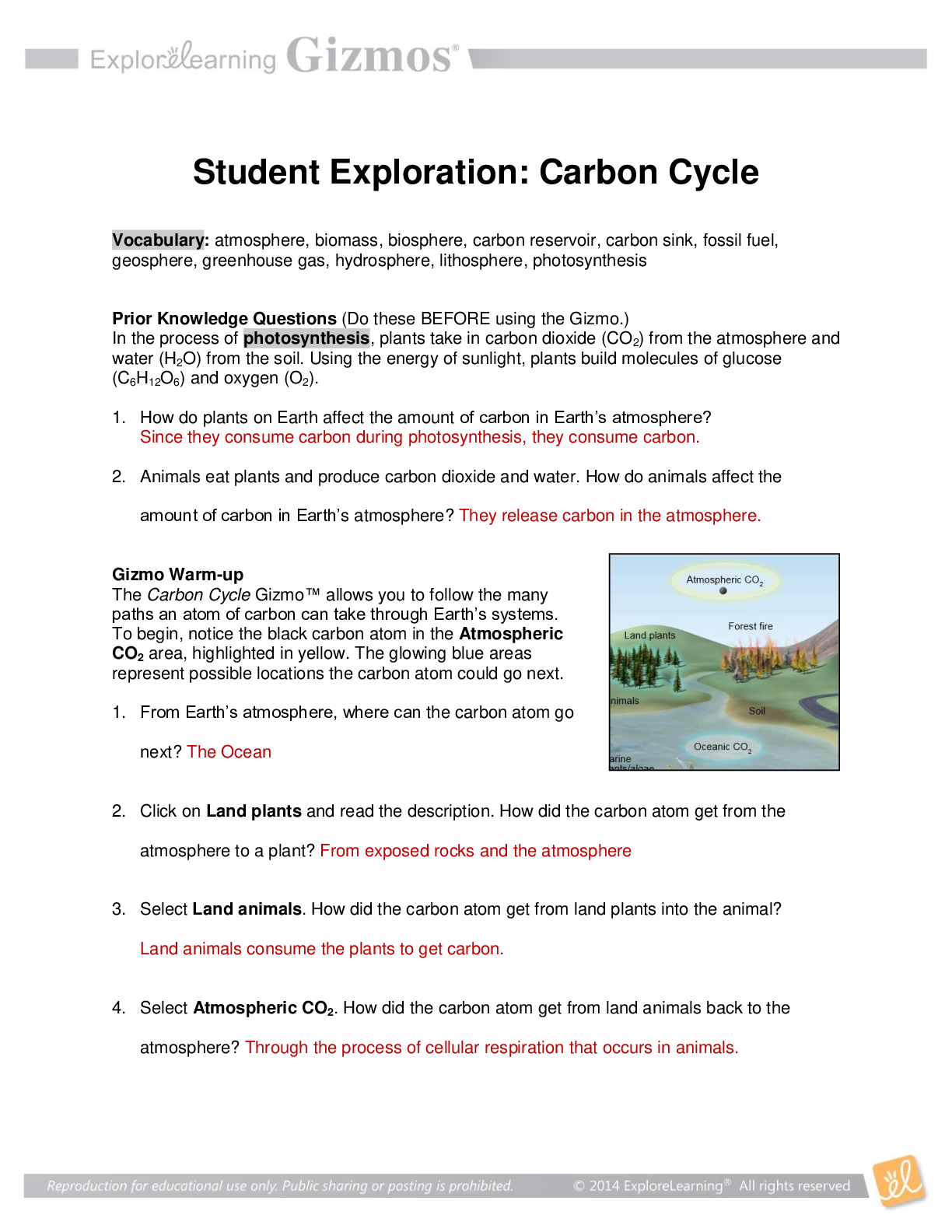
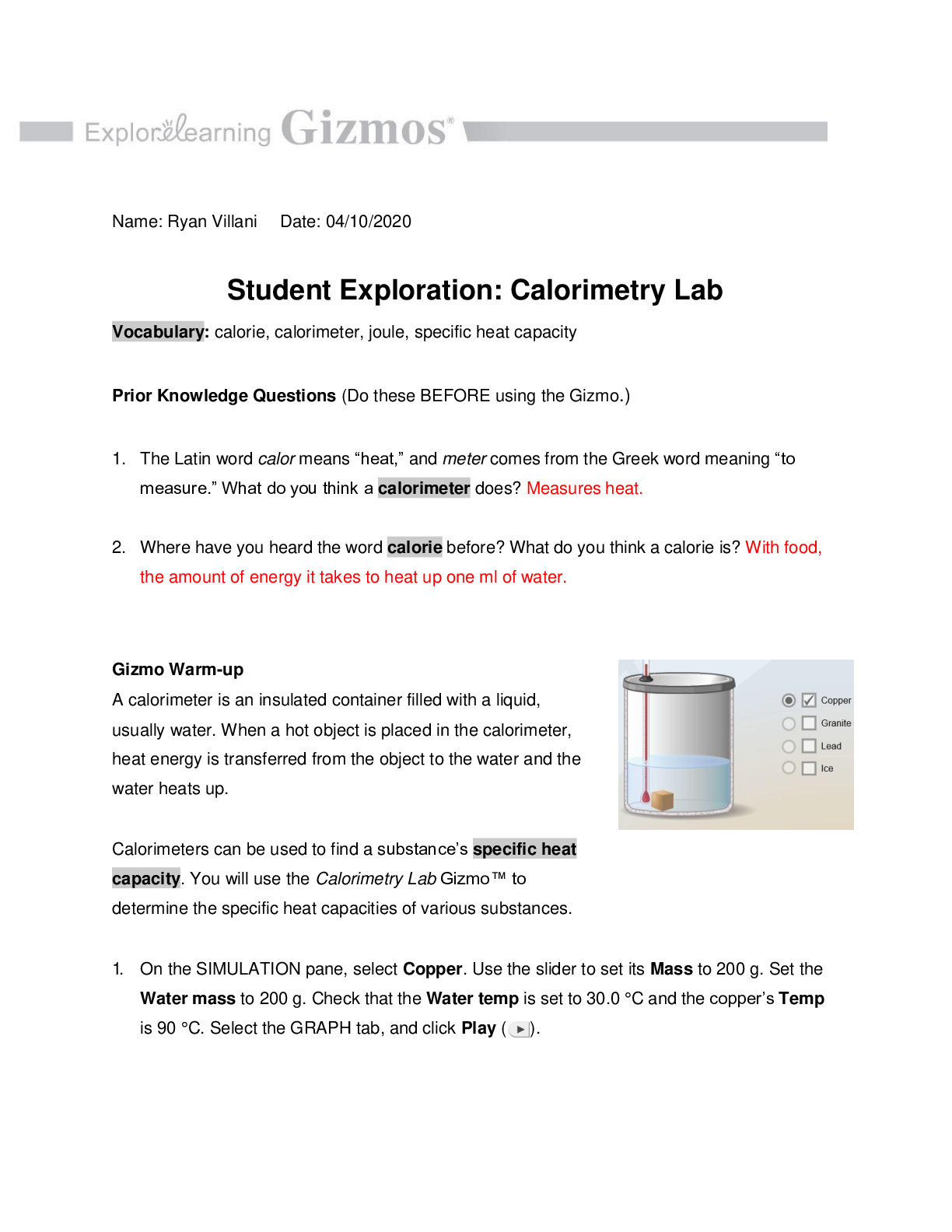
.png)
.png)

